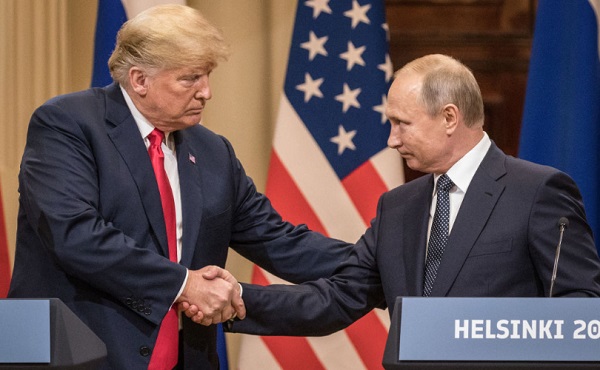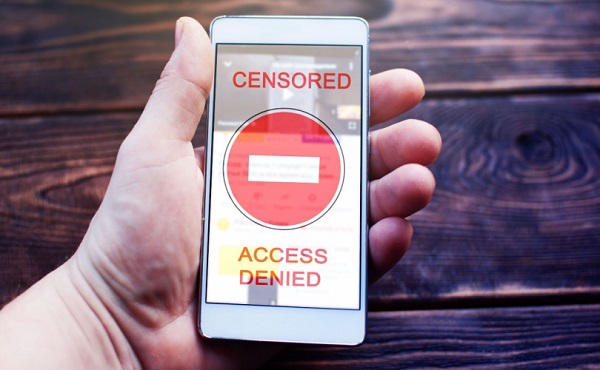COVID-19
Pandemic: We need to be smarter than China (and Italy)

**This article has been amended in light of the ongoing situation in Italy. It was originally posted to dredles.com.

Dr J Edward Les is a Pediatric Emergency Physician practicing in Calgary.
In the winter of 2017 two 17-year-olds with a 3-D printer created a little spinny thingy called the Fidget360 and promoted it on social media.
Fidget spinners quickly went viral. And because there was no patent, dozens of companies hurried to produce knockoffs.
By May of 2017 the little gadgets accounted for 17% of all online toy sales and had spun their way into every nook and cranny of the globe. Every kid I tended to in the emergency department of my hospital was spinning one of the plastic gizmos—and more often than not, so were their parents.
But then—just as quickly as it started—it was over. By September of 2017 fidget spinners had vanished, consigned to trash bins and forgotten corners of toy rooms and closets.
There’s a word we use to describe this sort of phenomenon, where something spreads quickly throughout an entire country, continent, or the whole world and affects an exceptionally high proportion of the population before burning itself out.
That word is pandemic, of course. We use it to describe massive outbreaks of disease, typically, not outbreaks of fidget spinners.
It’s a scary term—one that conjures up images of the Spanish flu, which wiped out up to 100 million people in 1918 (five percent of the world’s population); or of the bubonic plague, which ravaged the globe in the 14th century, killing half of Europe’s people and knocking the world population down to 350 million from 475 million.
Not all pandemics are as lethal as the Black Death or the Spanish flu, mind you. The H1N1 influenza pandemic of 2009, for instance, killed approximately half a million people—a big number, but roughly on par with the death toll extracted by the seasonal flu each year.
Another pandemic—COVID-19—now threatens the world. This time the viral assassin is a novel coronavirus that originated in China.
How much danger we are in remains a matter of intense debate. Death toll predictions run the gamut from the ridiculous to the obtuse, from epic eradication of mankind on the scale imagined by novelist Stephen King in The Stand, all the way to: “Nothing to see here, folks, keep calm and carry on.”
Rampant misinformation, relentless spin, and wacky thinking amplified by social media hasn’t brought clarity, suffice it say. U.S. President Donald Trump labeled the coronavirus a Democratic conspiracy. Paranoid wing-nuts blather on about Chinese bioweapons. Some people blame a vengeful God; others warn shrilly (and wrongly) of the risk of mail from China or of the danger of eating in Chinese restaurants.
I wrote about the coronavirus outbreak on February 20, seemingly an eternity ago. At the time I wasn’t overly stressed—just a bit fidgety. Twelve thousand people were infected and 250 were dead, pretty much all in the epicentre of Hubei province in China; but it seemed like a drop in the viral bucket compared to the seasonal flu, which takes out up to 600,000 people globally per year.
Plus, after initially dismissing the virus as a threat, the Chinese had reacted with unprecedented measures, locking down Wuhan and a slew of other cities, cordoning off Hubei province, shutting down mass transit, closing airports, and confining 60 million people to their homes—berating those who dared to venture outside with government drones.
It seems to have worked for the Chinese. Epidemiologic data show that the virus continued to spread post-lockdown, but primarily among families already infected pre-quarantine. Community spread was stopped in its tracks.
The number of cases in Hubei province ultimately crested at around 67,000, with 2900 dead. (Just a smattering of new cases are being reported.)
By the time the Chinese instituted their draconian quarantine measures, of course, the viral dandelion had gone to seed: infectious spores of coronavirus had already blown around the world.
Still, the worst-case scenario for Canada, I surmised, surely couldn’t be worse than what Hubei endured.
Applying Hubei’s experience—a population infection rate in that province of only 0.11% (67,000 divided by 60 million) and a case fatality rate of 4.3%— to Canada’s population of 37 million would mean roughly 41,000 cases and 1750 dead in Canada.
Bad enough—but seasonal influenza kills 3500 Canadians every year; traffic accidents kill 2000 people.
So not a huge deal, right?
But here’s the problem: Canada is not China. Neither is the U.S., or any of the other countries where coronaviral spores have taken root.
In one sense, at least, that’s a good thing: our air is much cleaner, and far fewer of us smoke cigarettes, leaving us with lungs presumably less hospitable to invading coronavirus.
However, we are not going to quarantine entire Canadian cities and provinces (it’s too late for that now anyway).
We’re not likely to close airports and shut down mass transit.
We’re not going to chase our citizens with drones.
We’re not going to mandate that entire city populations stay in their houses for weeks or months on end.
And we’re not likely to be as good at keeping infected patients alive—not because we lack the know-how, but because we lack adequate space, supplies, ventilators, and personnel.
The WHO’s Bruce Aylward, commenting on the case fatality rate observed in China, had this to say about the regime’s efforts:
“That’s the mortality in China — and they find cases fast, get them isolated, in treatment, and supported early. Second thing they do is ventilate dozens in the average hospital; they use extracorporeal membrane oxygenation (removing blood from a person’s body and oxygenating their red blood cells) when ventilation doesn’t work. This is sophisticated health care. They have a survival rate for this disease I would not extrapolate to the rest of the world. What you’ve seen in Italy and Iran is that a lot of people are dying.”
Canada may do better than Italy and Iran. But our hospitals are already stuffed to the gills (and people won’t stop suffering from heart attacks and strokes and trauma and cancer just because COVID-19 is kicking around).
We can’t, like the Chinese, build enormous hospitals almost overnight specifically for coronavirus patients. (We can’t even build a pipeline in this country.)
Does all of the above mean we’re screwed?
Not at all.
Certainly, we can’t do what the Chinese did. Nor should we try. The Italians are trying, and their country is descending into unmitigated chaos.
We must adopt a radically different strategy.
First, we must acknowledge that stopping this virus is like trying to stop the wind.
We must acknowledge what any seasoned epidemiologist can tell you: viral pandemics burn themselves out—but only after millions of people get sick and recover, freshly equipped with powerful antibodies to the virus. The resulting collective population immunity—called herd immunity—prevents the virus from hopping from person to person to person with epidemic speed, and the pandemic dies out.
There are no other options. Well, there are two, but neither are on the near horizon: complete eradication of the virus (as mankind did with smallpox), or the development of an effective vaccine.
We must let this pandemic burn itself out.
But just as importantly we must control how that happens.
The novel coronavirus has an R0 value of 2.2, which means that each person can infect 2.2 others. The case fatality rate across all of China was 2.3% (it’s higher in Wubei province and outside of China—it’s over 4% in Italy, for example). Those numbers, ominously, aren’t much different from the Spanish flu.
Knowing that most of the world cannot replicate China’s totalitarian lockdown to control viral spread, epidemiologists estimate that between 30-60% of the world could end up infected with coronavirus.
Wait a minute, you say: Hubei province had a population infection rate of only 0.11%. That’s a far cry from 30%.
Sure. But the Asian elephant in the room is that China, by its draconian quarantine measures, prevented community spread—which also very likely prevented the development of herd immunity.
When Wuhan and her 15 sister cities are re-opened; when the stranglehold on Hubei province is released; when the airports re-open and the trains start running and commerce restarts: we may see a second wave of infection in China. The virus is not gone, and because the Chinese prevented community spread from continuing for two months, most of their population is probably not immune.
It was the second wave of the Spanish flu, remember, that killed most of the people in that pandemic. And China could be on the cusp of a second wave of COVID-19.
We must not allow this to happen globally with COVID-19.
If epidemiologists are correct even at the low end of their estimates—30% of the world’s population infected and a case fatality rate (also at the low end) of 2.3%—that means 53 million dead: roughly 255,000 of them in Canada (73 times the death toll of the seasonal flu).
Horrific stuff. But the achilles heel of the coronavirus is that it primarily kills old people. And we can exploit that.
The Spanish flu killed across demographics, disproportionately killing those in the age categories of 20 to 40, over 65, and younger than five. The high mortality in healthy people was a unique feature of this pandemic – as was the case with the 2009 H1N1 pandemic.
But that’s not the case with COVID-19: it kills mostly the elderly and the infirm. The mortality rate in those over 80 is 15%; in those over 70, eight percent; and in those over 60 it’s just under four percent. In Italy, where the death toll stood at 366 as of Sunday, the average age of those who have died is 81.
At younger ages the mortality rate drops off dramatically – the vast majority of younger people, especially kids, recover without incident, most of them with mild or no signs of illness.
But—and this is key—even though children (and healthy adults) may be completely symptomatic or have only mild symptoms after they acquire coronavirus, they still carry the virus: they are vectors, much like the rats that spread the bubonic plague in the 14thcentury.
We are not going to exterminate the children as we did the rats—but we can take real steps to mitigate the risk of viral spread.
Those most vulnerable to the deadly effects of this virus—the elderly and the medically compromised—should self-quarantine while we judiciously allow the virus to do what it does among the rest of us.
That means that we all continue to protect ourselves sensibly, just as we do from the flu: wash our hands, cough into our elbows, stay home if we are sick, learn the “Ebola handshake”, and stay away from hospitals and clinics unless truly necessary.
In an earlier version of this piece I wrote: “We must not close the schools, the airports, the theatres, the restaurants.”
I’m no longer so sure.
This is a fast-moving epidemic, and it is imperative—imperative—that we pay close attention to what is happening elsewhere as this virus marches around the world.
Reports out of Italy are deeply sobering: the elderly are dying, and they are sickening at a furious rate. Hospital resources have been completely overwhelmed.
The Italians were utterly unprepared for the sheer volume of critically ill patients requiring intensive care all at once.
And so is Canada.
We need to slow the virus down. We need to impede the rate of its spread to the elderly.
It may be prudent, as COVID-19 establishes a foothold in Canada. to proactively close schools and universities, and to cancel concerts and conferences and other mass gatherings.
Messaging is key. School closures should not incite fear and alarm. The risk to the young and healthy remains very low—whether or not we close schools and cancel concerts doesn’t change that.
But we must do whatever we can to slow the dissemination of virus to the elderly and medically compromised, to as much as possible lessen the strain on our health care resources.
It is far easier for hospitals to deal with a crush of infected, critically ill patients over a four month period than over a four weekperiod.
We must, in the language of disease, “flatten the epidemiologic curve”.
We must sequester the elderly and the medically compromised away from the rest of the population. They should avoid crowds, travel, and children—likely until August or later.
We cannot do this by decree—that will never work. But we must shout this message of self-quarantine from the rooftops loudly and repeatedly so that the elderly and medically compromised understand that if they do not comply, they stand a high risk of dying.
At the same time, it is essential that we protect heath care workers and those who are medically at-risk in hospitals: we must enact systems of external triage (a.k.a. drive-through emergency medicine), external treatment sites, telemedicine, mobile treatment teams, and so on.
These measures are critical to to lessen the coming unprecedented demands on our health care system, to reduce the death rate and to buy time until we either have herd immunity or an effective vaccine.
Our politicians and medical leaders have dropped the ball on this. They’ve been fidgeting while this virus burns, spinning confused and garbled messages of half measures and wrong measures.
It’s time to stop the fidgeting, to do away with the spin, and to lead with strength and clarity.
We must not allow the world to succumb to chaos.
We must not allow the economic infrastructure of the world to be destroyed, and society completely upended, by a viral pandemic that targets primarily the elderly and medically compromised.
There is no need to panic.
We should remain calm and carry on.
But nor should we keep our head in the sand.
As Bruce Aylward put it:
“Get organized, get educated, and get working.”
Bruce Dowbiggin
The Covid 19 Disaster: When Do We Get The Apologies?

Breaking: Drs. Bonnie Henry and Theresa Tam have been appointed to the Order of Canada in recognition of their role in the country’s response to the COVID-19 pandemic.
And so the game of covid liar’s poker has more winners. It’s like awarding the captain of the Titanic the Nobel Prize for his work on floatation. As we now know these two— and the other WHO finger puppets in Canada— made the Covid 19 episode worse, not better, with their prescription for panic, positives and punishment. Even as they knew the truth about the limits of the virus and the efficacy of vaccines they continued to spew fallacious PCR data on the extent of the sickness and who was at risk.
Put simply, to protect vulnerable seniors they said kids were also at great risk. Which was unconscionable.
In this they encouraged Justin Trudeau in his worst instincts, combining his father’s insouciant disregard for civil rights (sending in the police) with his mother’s mental stability. Propped up by Team Tam and its U.S. allies such as Anthony Fauci, this hysteria peaked with a sequestered PM crushing the Truckers Convoy’s vaccine protest with emergency measures and destruction of civil liberties.
Lest you wonder, this overreach was recognized at the time. Justice Maclean wrote at the trial of Convoy organizers, “Defendants & other persons remain at liberty to engage in a peaceful, lawful & safe protest”. On Feb. 16, he continued a no-honking order, again writing: “Defendants & other persons remain at liberty to engage in a peaceful, lawful & safe protest.”
The leaders of the Convoy, lynched by Canadian media’s phoney claims of right-wing American interference, are still fighting jail time on charges of nuisance. While violent criminals are routinely released on bail or absolved.
Justice Richard Mosley later concluded that while the convoy was a disruption of public order, it didn’t constitute a national emergency and invoking the act “does not bear the hallmarks of reasonableness — justification, transparency and intelligibility.” But in real time Team Tam made no attempts to correct the wilder misgivings about Covid (lockdowns, mandatory vaccines). Trudeau was given a hall pass. Needless to say the purchased media made things infinitely worse regurgitating these mistakes.
In short, they knew better but hid the truth. But why pick on Henry and Tam? Under Trudeau and his wingman Jagmeet Singh this was the golden age of lies and prevarications in Canada and the U.S. No apologies were ever offered when the truth emerged.
As we’ve noted before, Trudeau cried with a teddy bear carefully positioned over 751 alleged unmarked graves in a known Catholic cemetery that the local Cowessess band abandoned. The Liberal government knew the claim of 215 “children’s graves” was false, and still ran with it to get Trudeau his photo-op. Naturally the CBC Media Party played (and still plays) accomplice in this farce as the Canadian flag was lowered to half-mast for six months and Trudeau ratted out Canada at the UN as a genocidal state.
There were more, plenty more Trudeau scandals that media endorsed and then stood by even as the truth was revealed. SNC Lavalin. We Charity. Arrive Can app. Firing indigenous justice minister. Chinese drug infiltration/ money laundering. Nazi Celebrated in Parliament. Welcome To Canada immigration. Nova Scotia massacre. McKinsey Consultation. Blackface. And so on.
And were there apologies when it came time to make the Trudeau Liberals accountable? No, they staged a media circus over Donald Trump’s assertion of 51st state. All the fake news and deliberate lies went poof, allowing Mark Carney to seamlessly assume the PM job.

Lest We Forget Pt. 2 it was not exclusive to Canada. As we are now learning: Barack Obama and Joe Biden sat in an August 3, 2016 Situation Room briefing and said, yeah, let the highest officials in our administration fabricate evidence to frame the opposing party candidate Donald Trump. Obama. Biden. Comey. McCabe. Strzok. Page. Rice. Etc.
Knowingly using the faked Clinton campaign ‘Steele Dossier’ hoax, they launched a federal investigation into the Trump presidential campaign that lasted three years after Trump was sworn in as the nation’s 45th President. Arresting and jailing his partners and colleagues. Inventing fake stories for their media enablers. Let’s repeat that. Saint Obama knew there was criminal activity in the process but let his henchmen try to fix an election.

And when the ruse was uncovered no one apologized. No one in authority was fired or jailed. The Pulitzer Prizes awarded to the NT Times and Washington Post for disseminating the DEMs scandal were not rescinded. Nor were they given back by the lying newspapers.
The concerted frauds of the same U.S. DOJ, FBI and State Departments were fed by media and accepted by gullible publics in Canada and America. The fantastical 2020 election results were likewise drummed into the public irrespective of the sudden “appearance” of 27 million new votes during a pandemic.
It was all a fitting preamble to the 2020-2024 Biden senility scandal with Democrats running a man they knew was in full dementia. In the 2020 election Biden was hidden from public view, the better to let media attack Trump for spurious charges launched by partisan DNC attorneys in Georgia, New York and DC. Even then it took the suppression of Hunter Biden’s incriminating laptop just prior to the election to get his father elected.

The dance of denial continued in Biden’s term as he physically and mentally deteriorated before the American public. But inquiries about who was running the government if not Biden were harshly suppressed. Media lackeys noted he was sharp as a tack mentally and in tip-top physical condition when he wasn’t falling down stairs.
It took the stunning 2024 debate debacle with Trump to strip away the lies about Biden’s health, now said to be advanced prostate cancer and Parkinson’s. The media, caught in their own lies about Biden’s condition, offered no apologies and tried to blame Biden’s stutter for the performance.. Right.
These were the two greatest U.S. hoaxes from people who’d cried hoax incessantly. They were hardly the only abuse of public trust. Some of the perpetrators are said to now be under investigation— even as they hand out awards to each other. The media’s credibility is shattered and yet they still blame others. Jaded voters are taking a “we’ll see” approach. But expectations of any change in DC or Ottawa are limited.
As Stephen Taylor posted on X: “Turns out for Liberals, ‘elbows up’ just means ‘noses up’ like it always has.”
Bruce Dowbiggin @dowbboy is the editor of Not The Public Broadcaster A two-time winner of the Gemini Award as Canada’s top television sports broadcaster, his new book Deal With It: The Trades That Stunned The NHL And Changed hockey is now available on Amazon. Inexact Science: The Six Most Compelling Draft Years In NHL History, his previous book with his son Evan, was voted the seventh-best professional hockey book of all time by bookauthority.org . His 2004 book Money Players was voted sixth best on the same list, and is available via brucedowbigginbooks.ca.
Freedom Convoy
Court Orders Bank Freezing Records in Freedom Convoy Case

|
A Canadian court has ordered the release of documents that could shed light on how federal authorities and law enforcement worked together to freeze the bank accounts of a protester involved in the Freedom Convoy.
Both the RCMP and TD Bank are now required to provide records related to Evan Blackman, who took part in the 2022 demonstrations and had his accounts frozen despite not being convicted of any crime at the time.
The Justice Centre for Constitutional Freedoms (JCCF) announced the Ontario Court of Justice ruling. The organization is representing Blackman, whose legal team argues that the actions taken against him amounted to a serious abuse of power.
“The freezing of Mr. Blackman’s bank accounts was an extreme overreach on the part of the police and the federal government,” said his lawyer, Chris Fleury. “These records will hopefully reveal exactly how and why Mr. Blackman’s accounts [were] frozen.”
Blackman was arrested during the mass protests in Ottawa, which drew thousands of Canadians opposed to vaccine mandates and other pandemic-era restrictions.
Although he faced charges of mischief and obstructing police, those charges were dismissed in October due to a lack of evidence. Despite this, prosecutors have appealed, and a trial is set to begin on August 14.
At the height of the protests, TD Bank froze three of Blackman’s accounts following government orders issued under the Emergencies Act. Then-Prime Minister Justin Trudeau had invoked the act to grant his government broad powers to disrupt the protest movement, including the unprecedented use of financial institutions to penalize individuals for their support or participation.
In 2024, a Federal Court Justice ruled that Trudeau’s decision to invoke the act had not been justified.
Blackman’s legal team plans to use the newly released records to demonstrate the extent of government intrusion into personal freedoms.
According to the JCCF, this case may be the first in Canada where a criminal trial includes a Charter challenge over the freezing of personal bank accounts under emergency legislation.
|
-

 Business18 hours ago
Business18 hours agoMost Canadians say retaliatory tariffs on American goods contribute to raising the price of essential goods at home
-

 National1 day ago
National1 day agoWomen and girls beauty pageant urges dismissal of transgender human rights complaint
-

 Alberta18 hours ago
Alberta18 hours agoCross-Canada NGL corridor will stretch from B.C. to Ontario
-

 International2 days ago
International2 days agoSupport for the Ukraine war continues because no one elected is actually in charge.
-

 Business2 days ago
Business2 days agoTrump slaps Brazil with tariffs over social media censorship
-

 Business2 days ago
Business2 days agoCBC six-figure salaries soar
-

 Business19 hours ago
Business19 hours agoB.C. premier wants a private pipeline—here’s how you make that happen
-

 Addictions2 days ago
Addictions2 days agoCan addiction be predicted—and prevented?




